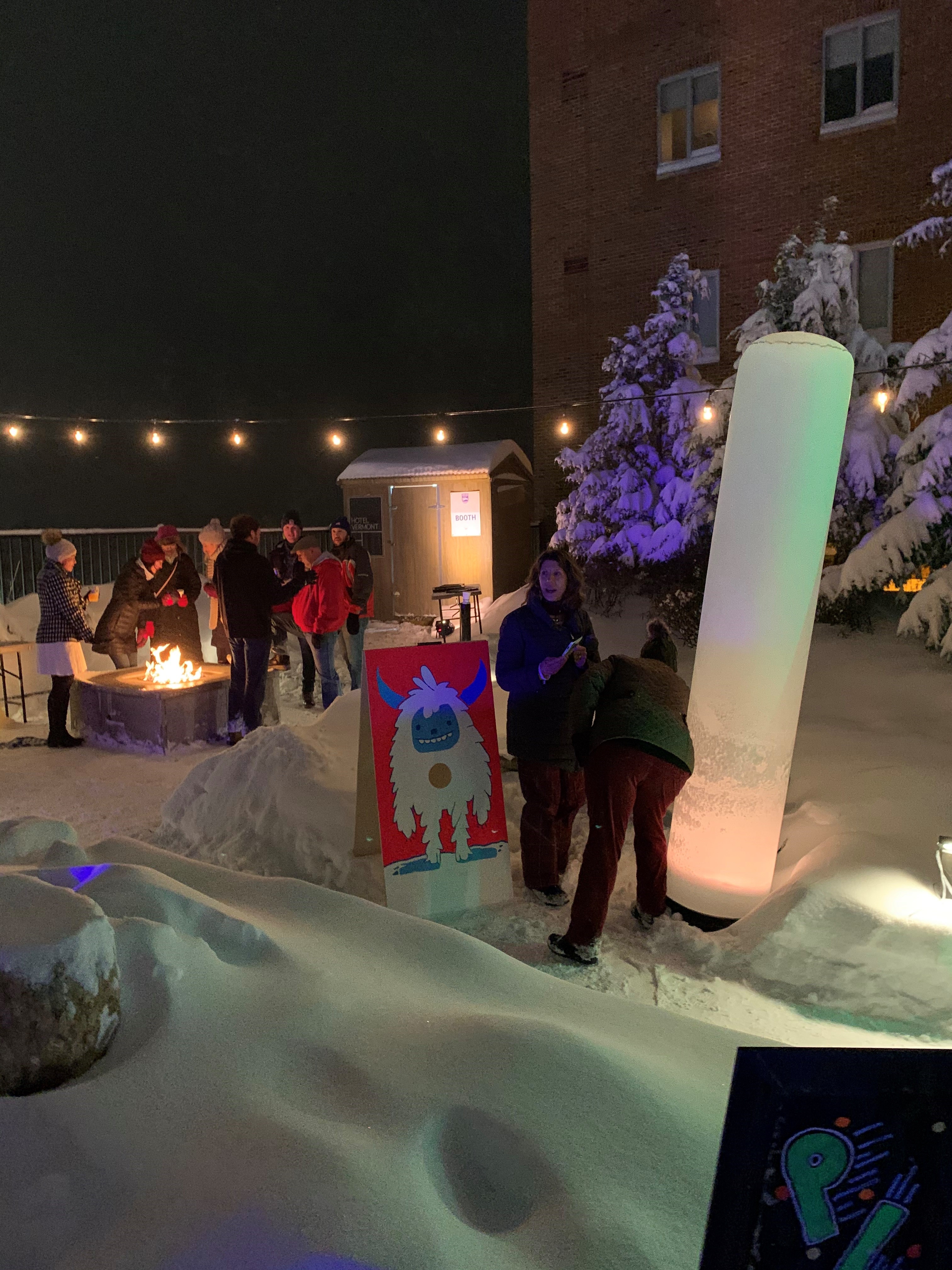AARP Hearing Center

Winter can be a challenging season for many communities, especially those that experience significant snowfall. However, with thoughtful planning and creative placemaking, winter can also be a time of vibrant community engagement and activity. 8 80 Cities Winter Placemaking Guide, created with support from AARP, offers valuable insights and strategies to help cities and towns keep residents engaged and connected during the colder months. Here are some best practices for winter cities to consider when planning winter activities.
1. Embrace the Winter Aesthetic
Winter offers a unique aesthetic that can be leveraged to create inviting and visually appealing public spaces. Consider incorporating elements such as:
- Lighting: Use warm, ambient lighting to create a cozy atmosphere. String lights, lanterns, and illuminated sculptures can add a festive touch and make outdoor spaces more inviting during the darker months.
- Decorations: Embrace seasonal decorations like wreaths, garlands, and ice sculptures. These elements can enhance the visual appeal of public spaces and create a sense of place.
- Color: Incorporate bright and cheerful colors to contrast with the winter landscape. Colorful murals, painted benches, and vibrant signage can uplift the mood and attract visitors.
2. Create Comfortable and Accessible Spaces
Ensuring that public spaces are comfortable and accessible during winter is crucial for encouraging community participation. Consider the following strategies:
- Seating: Provide ample seating options with weather-resistant materials. Heated benches or seating areas with blankets can offer warmth and comfort.
- Shelter: Install shelters or windbreaks to protect against harsh weather conditions. Covered pavilions, pergolas, and heated tents can provide refuge from the cold.
- Pathways: Keep pathways clear of snow and ice to ensure safe and easy access. Use non-slip materials and consider heated walkways in high-traffic areas.
3. Plan Engaging Activities
Winter activities can bring people together and create memorable experiences. Here are some ideas to consider:
- Outdoor Markets: Host winter markets featuring local vendors, artisans, and food stalls. These markets can become community hubs where people gather to shop, eat, and socialize.
- Ice Skating: Set up an ice skating rink in a central location. Ice skating is a popular winter activity that appeals to people of all ages and skill levels.
- Festivals and Events: Organize winter festivals, holiday parades, and cultural celebrations. These events can showcase local traditions, music, and cuisine, fostering a sense of community pride. In times of extreme weather it may be difficult to plan a full-on event. Consider “pop-up” style events that can be deployed in a few days when you know the conditions will be right for bringing the community together.
4. Promote Health and Wellness
Winter can be a challenging time for physical activity and mental well-being. Encourage healthy lifestyles with these initiatives:
- Fitness Programs: Offer outdoor fitness classes such as yoga, tai chi, or guided walks. These activities can help residents stay active and connected.
- Mental Health Support: Create spaces for relaxation and mindfulness, such as meditation gardens or quiet reading nooks. Partner with local organizations to provide mental health resources and support.
- Nutrition: Promote healthy eating by hosting cooking demonstrations, nutrition workshops, and community meals featuring seasonal produce.
5. Foster Inclusivity and Engagement
Inclusivity is key to successful placemaking. Ensure that winter activities are accessible and welcoming to all community members:
- Multigenerational Activities: Plan activities that cater to different age groups, from children to seniors. Intergenerational programs can strengthen community bonds and create lasting memories.
- Cultural Sensitivity: Recognize and celebrate the diverse cultural backgrounds within your community. Incorporate traditions and customs from various cultures into your winter programming.
- Feedback and Participation: Involve community members in the planning process. Gather feedback through surveys, focus groups, and public meetings to ensure that activities meet the needs and preferences of residents.
6. Learn from Others
Winter Cities: 8 80 Cities worked with three North American cities on how to create vibrant Winter Cities. Their findings and suggestions can be found here.
Conclusion
Winter placemaking is an opportunity to transform cold, quiet months into a vibrant and engaging season for your community. By embracing the winter aesthetic, creating comfortable spaces, planning engaging activities, promoting health and wellness, and fostering inclusivity, you can create a winter wonderland that brings people together and enhances the quality of life for all residents. Use 8 80 Cities’ Winter Placemaking Guide as a resource to inspire and guide your efforts, and watch your community thrive even in the coldest months.































































